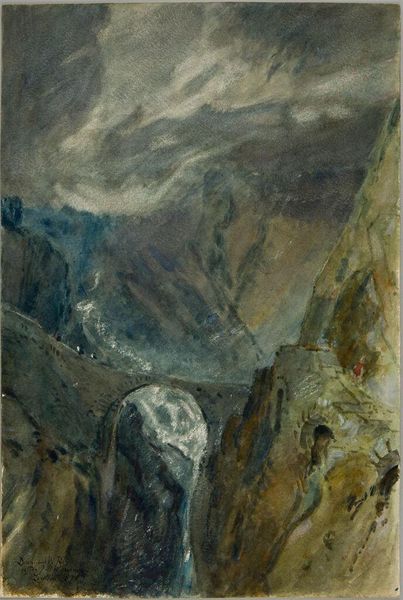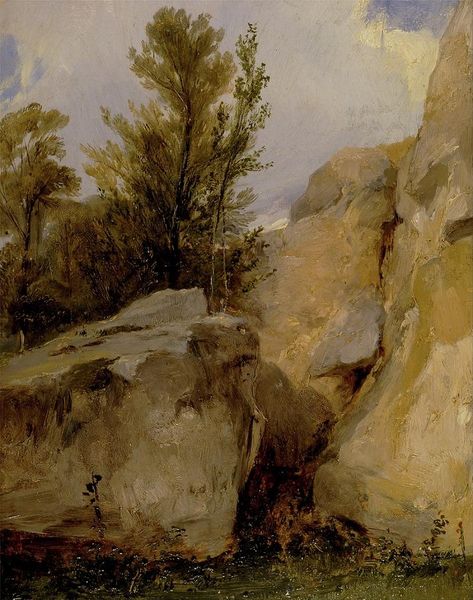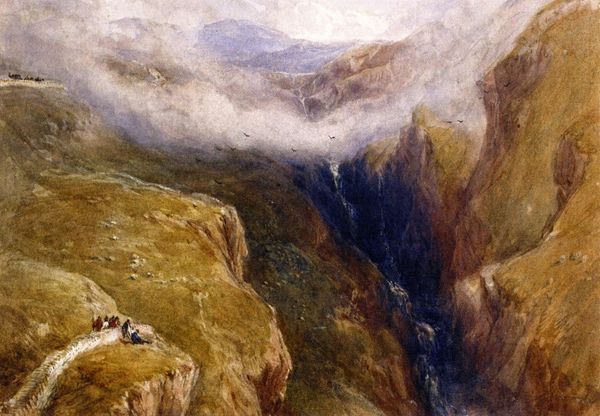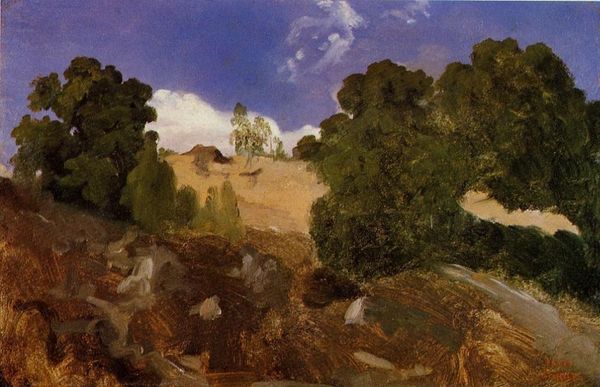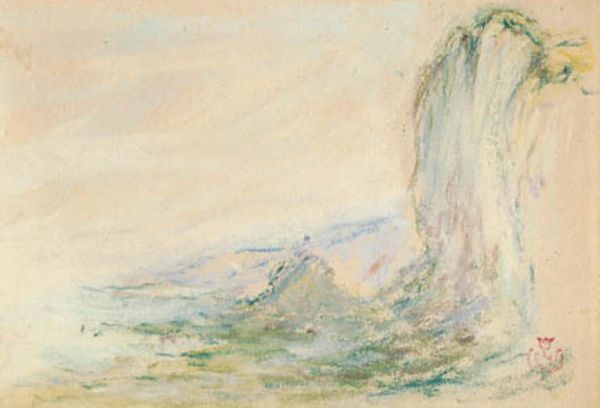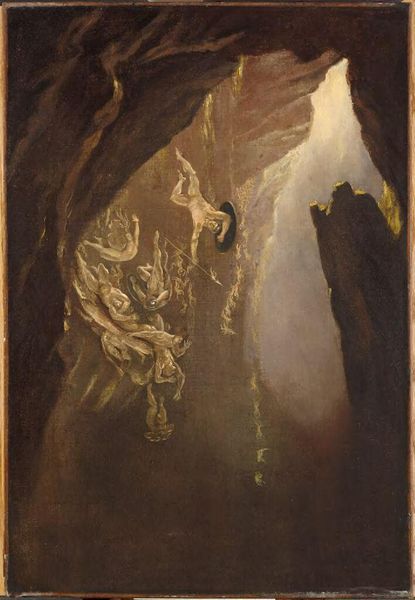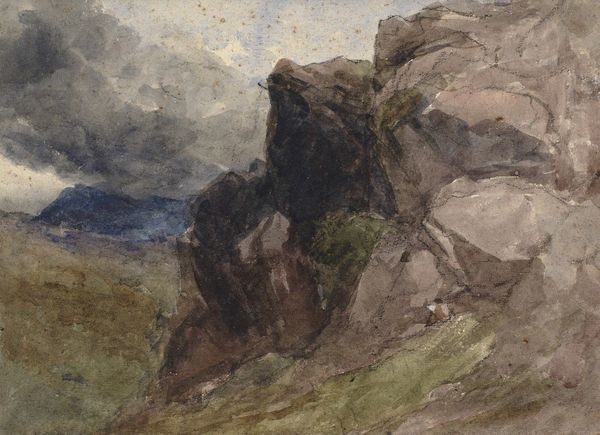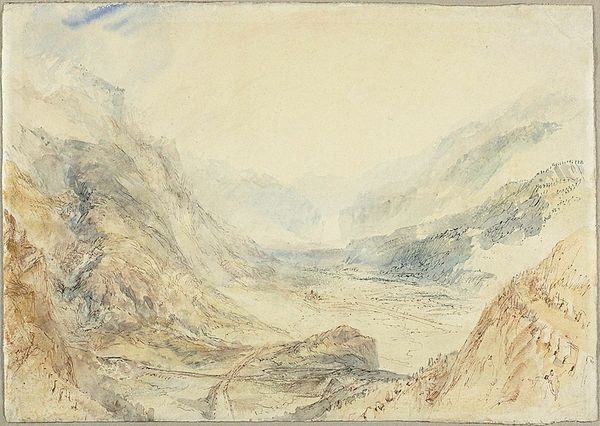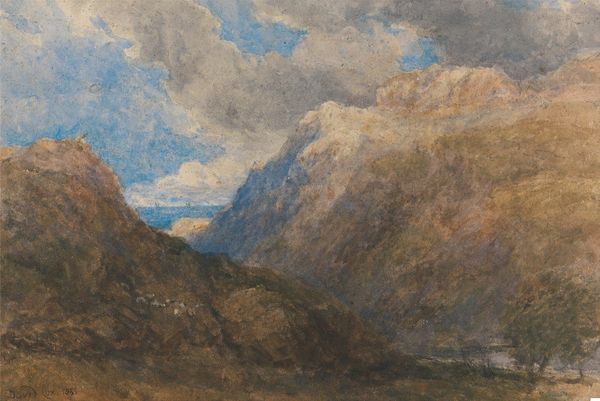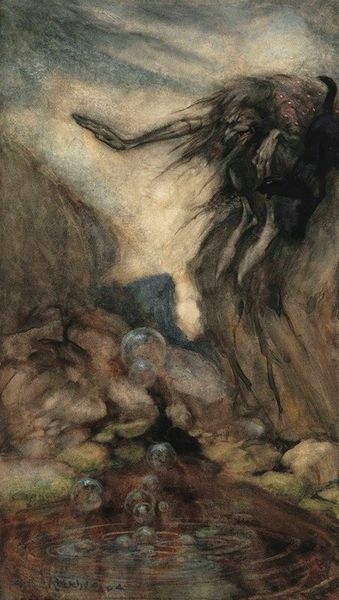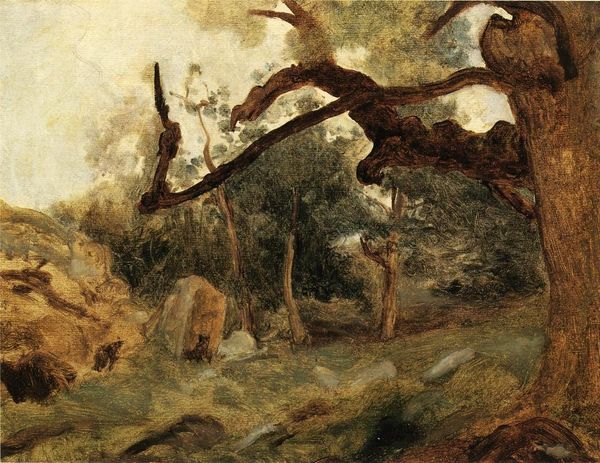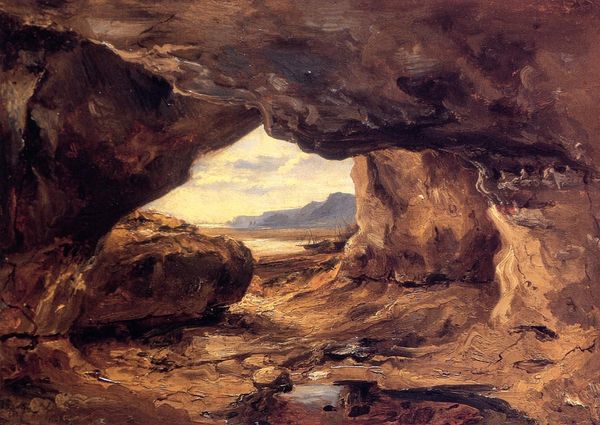
Dimensions: 14 x 10 cm
Copyright: Public domain
Curator: Sargent’s “Bivouac,” created in 1911 and now held in a private collection, is a striking example of his watercolor work, showing a figure resting within a rugged landscape. Editor: Immediately, the chromatic intensity grabs my attention. There’s a tension between the deep browns and blacks of the cliff and the bright blue of the water above – almost a sense of opposing forces at play within the composition itself. Curator: Precisely. The formal contrasts underscore Sargent's mastery of composition. But consider too that plein-air landscapes such as this required portability; watercolor’s materiality lent itself to working outside, in often arduous conditions. Who do you think the artist produced this on site? What implications does it have? Editor: Well, that’s fascinating! I see the rough strokes, the layered washes—it almost gives the sense that the landscape is forming before our eyes. Is there any sense of the specific location informing the piece? Is there perhaps a symbolic relevance? Curator: It’s thought that this was painted during his trip to the Italian Alps. Watercolor, as a quicker and more portable medium than oil, permitted Sargent to record these instantaneous visual experiences. Editor: You can really feel the immediacy, but beyond that, there's this somber mood. The hunched figure blends into the dark earth around them and in front the landscape. Even if there is water and greenery here. there’s an implicit melancholy embedded within the chromatic composition, which enhances our response to a kind of drama between scale and individual fate. Curator: And the figures placement suggests not just isolation, but a dependence upon the landscape, its materials. Was it not this that Sargent wanted us to appreciate? The workers required, but ultimately inconsequential, compared to geological forms, perhaps to hint the transient lives of man versus timeless nature. Editor: I think you're right. And those expressive marks in the painting convey both a visual tension and Sargent’s masterful handling of materials. Curator: Exactly. Thinking about "Bivouac" beyond pure representation helps us reflect on our relation to production itself. Editor: Definitely. The painting rewards closer study, and understanding the painting in all its various elements helps the picture cohere in a far richer, meaningful way.
Comments
No comments
Be the first to comment and join the conversation on the ultimate creative platform.
